According to a
released by the Government of India in collaboration with other non-profit organisations on 30 January 2024, there are just 718 snow leopards in India, of which only a third are under legal protection. The Status Report of Snow Leopards in India noted that barely 34% of the 1,20,000 square kilometres of snow leopard habitat in India is legally protected. Less than 70% of this predator’s habitat remains unprotected. (Above images of Dr Tsewang Namgail, a snow leopard & Charudutt Mishra)
Given these figures, it’s imperative for local communities to be engaged in the conservation of this threatened species. Here are eight conservationists who have done incredible work in not only understanding snow leopards but also engaging local communities to protect them.
Charudutt Mishra (Charu), the executive director of Snow Leopard Trust, is considered by many as the world’s foremost expert on snow leopard conservation.
He is a pioneer of the community-based conservation model and has spent nearly three decades spearheading groundbreaking projects. In 1997, he embarked upon a PhD in the remote village of Kibber, in Spiti Valley, Himachal Pradesh. Upon reaching there, he heard a disturbing story that a snow leopard had recently been mercilessly killed.
Instead of letting anger or distrust get in the way, Charu immersed himself in the community and took the time to understand the hardships under which they lived. He learnt that local communities were not unwilling but unable to “actually participate in conservation”.
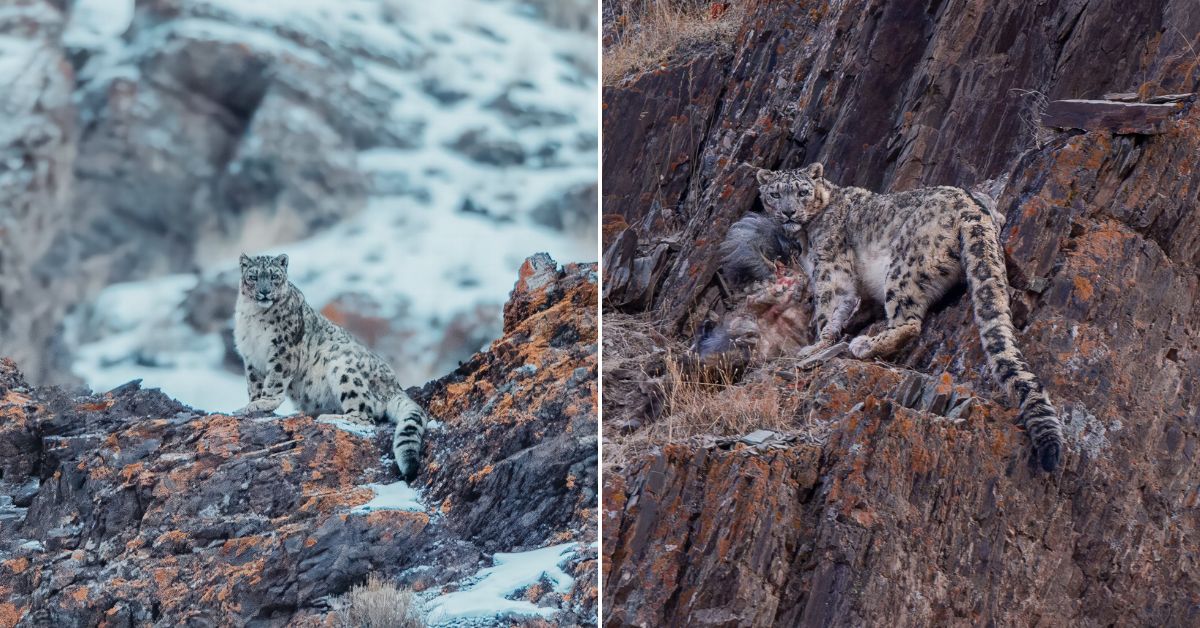
Snow Leopard (Images courtesy Karamjeet Singh/X)
Akin to the model later adopted by the late and Dr Tsewang Namgail of Snow Leopard Conservancy-India Trust in Ladakh, Charu created India’s first community-managed livestock insurance programme in 2002 — followed by other community-based conservation and livelihood initiatives.
In 2013, he established the Global Snow Leopard and Ecosystem Protection Programme, “an intergovernmental alliance of all 12 snow leopard range countries working towards their protection”. Today, he continues to impart valuable knowledge to other conservationists on how to ethically and effectively engage with local communities to protect snow leopards.
(Source: )
The late Rinchen Wangchuk — a wildlife researcher from Ladakh and founder of the (SLC-IT) — and his successor (current director of SLC-IT) Dr Tsewang Namgail, understood very early on the need to reconcile snow leopard conservation with the needs of the local communities who lose their livestock, particularly sheep and goats, to these elusive wild cats.
For example, growing up as a child herder in the picturesque Skurbuchan village in Leh district, Dr Namgail understood what it meant for local communities to lose their goats and sheep to snow leopards. This is something even the late Rinchen Wangchuk and Jigmet Dadul — one of India’s leading Snow Leopard naturalists and trackers — also understood as they spent entire winters living in tents and monitoring snow leopards in the 1990s.
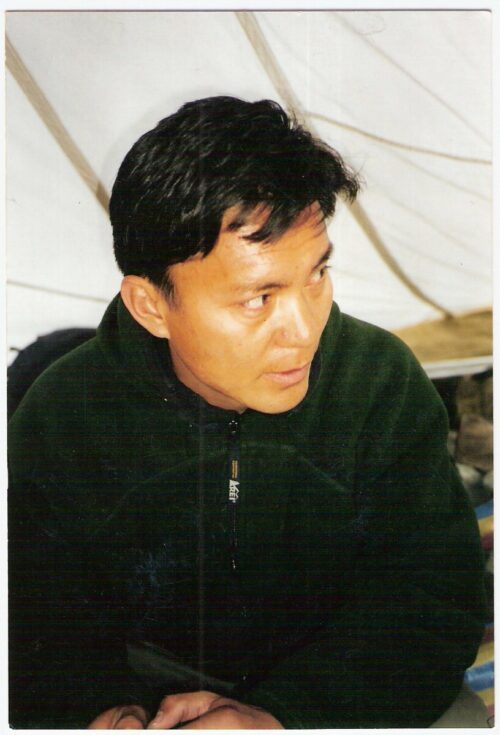
Late Rinchen Wangchuk
They took a variety of steps to address the needs of local communities, thus addressing a primary source of snow leopard deaths — human-animal conflicts. These steps included assisting local farmers and nomads to build structures that protect their livestock; establishing a community-controlled livestock insurance programme; and pioneering one of the earliest models of eco-tourism with conservation-linked homestays located in critical snow leopard habitats.
Converting these once-angry locals into active conservationists is no mean feat. Today, however, Jigmet and his son Nawang Gaylston, run a wildlife expedition company called ‘The Snow Leopard Quest’, bringing researchers, conservationists, and tourists to witness this majestic wild cat.
— an award-winning snow leopard conservationist with over two decades of experience as a Wildlife Guard in Hemis National Park, Ladakh — grew up in a small village called Chilling. He was barely 12 years old when he saw a snow leopard in the wild barely 100 metres away hunting a blue sheep.
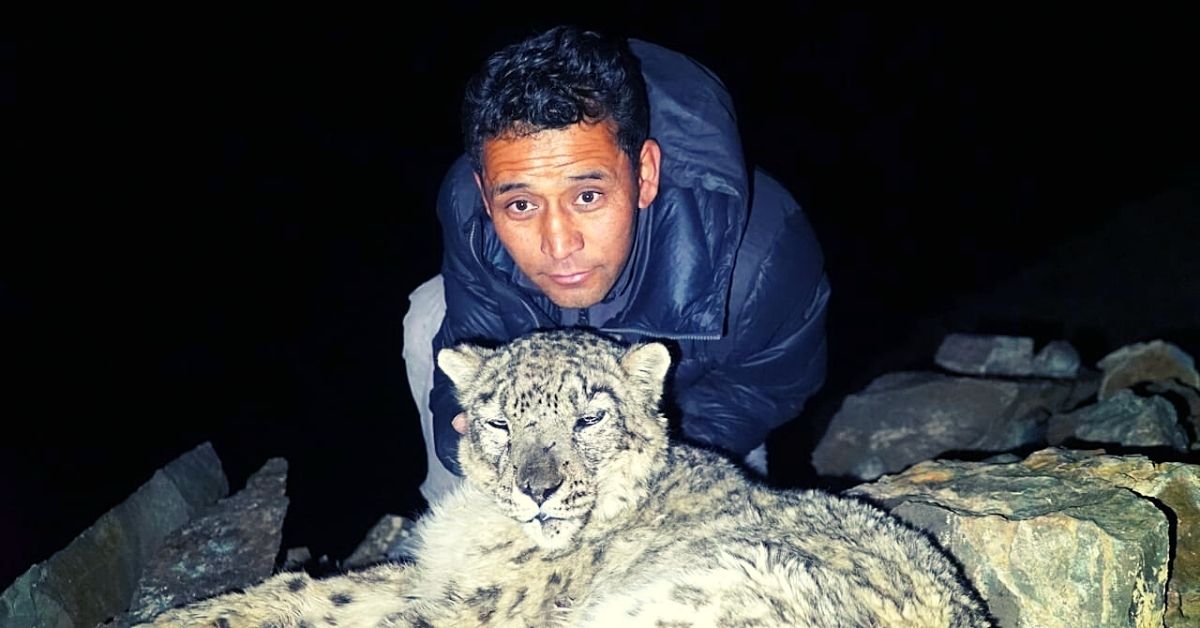
Khenrab Phuntsog
As many conservationists have stated in the past, there is something almost mythical and spiritual about the presence of snow leopards. It’s something Khenrab also felt when he was 12 and there is no doubt that this vivid memory he had of a snow leopard would inspire Khenrab to dedicate the rest of his life to protect them.
Since joining the Wildlife Protection Department in 2000, he has rescued about 50 snow leopards trapped in human habitations and released them back into the wild. An expert in installing camera traps and tracking, he also consults private operators on how to plan snow leopard expeditions, train spotters and trackers, and leave behind a minimal ecological footprint.
— a field manager with the Nature Conservation Foundation (NCF) in Ladakh — has dedicated his life to reducing human-wildlife conflict in 17 communities across Eastern Ladakh and creating awareness about the importance of environmental protection.
Leveraging a system of community-based conservation, he has facilitated the implementation of critical initiatives like self-sustaining insurance schemes for pastoralists who lose their livestock to predators like snow leopards, creation of grazing-free reserves for herbivores like the Tibetan gazelle (that are prey for snow leopards), and converting Shandongs (traditional wolf traps) into holy Buddhist sites that allow trapped animals to escape back into the wild.
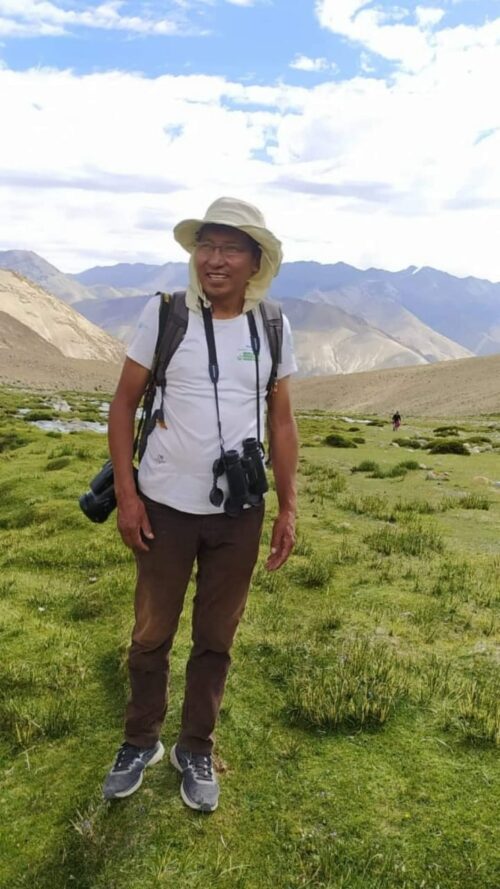
Karma Sonam
What has worked for Karma is his natural ability to build and maintain close relationships with different communities. Leveraging these close relationships, he convinces and incentivises local communities to work for wildlife conservation. For decades, pastoralists in Ladakh have had a difficult relationship with predators, like snow leopards and wolves, who prey on their livestock. Through his extensive grassroots efforts, he has done a lot to repair that relationship.
Koustubh Sharma — the Conservation Science Director at Snow Leopard Trust — has worked in some of the remotest and roughest terrains in the world to better understand snow leopard ecology.
Introduced to them by Dr Raghu Chundawat, a pioneer of snow leopard studies in India, Koustubh has dedicated a great deal of time to the Global Snow Leopard and Ecosystem Protection Programme. The programme, according to Koustubh, “brings together governments from 12 snow leopard range countries, policymakers, institutions, organisations and conservationists toward securing the future of snow leopards and their mountains”.

“What I wish more people knew about conservation initiatives is that not a single penny of the money meant for snow leopard conservation goes into the pocket of the snow leopards. It is always invested in support of people, whether it is the local or indigenous communities running conservation programmes, the frontline rangers patrolling and monitoring wildlife, or the conservation teams working under expedition conditions,” says Koustubh.
He goes on to add, “…our initiatives are about much more than just protecting a single species. We work closely with local and indigenous communities to create sustainable livelihoods that benefit both people and wildlife. When we invest in conservation, we’re investing in people.”
(Source: and )
It was an evening in 2019 when Shiv Kumar — a Deputy Range Officer at Lahaul forest in Himachal Pradesh — first spotted a snow leopard. Speaking to in 2022, he called it an “unforgettable moment”. Thereafter, Shiv began conservation awareness classes about snow leopards among school children for the animal’s protection. He also reached out to villagers to inform them about its importance, threatened existence and its need for protection.
Like in Ladakh, the livestock belonging to the Gaddi community — a community of migratory shepherds — and locals in the Lahaul area remain under threat from snow leopards.
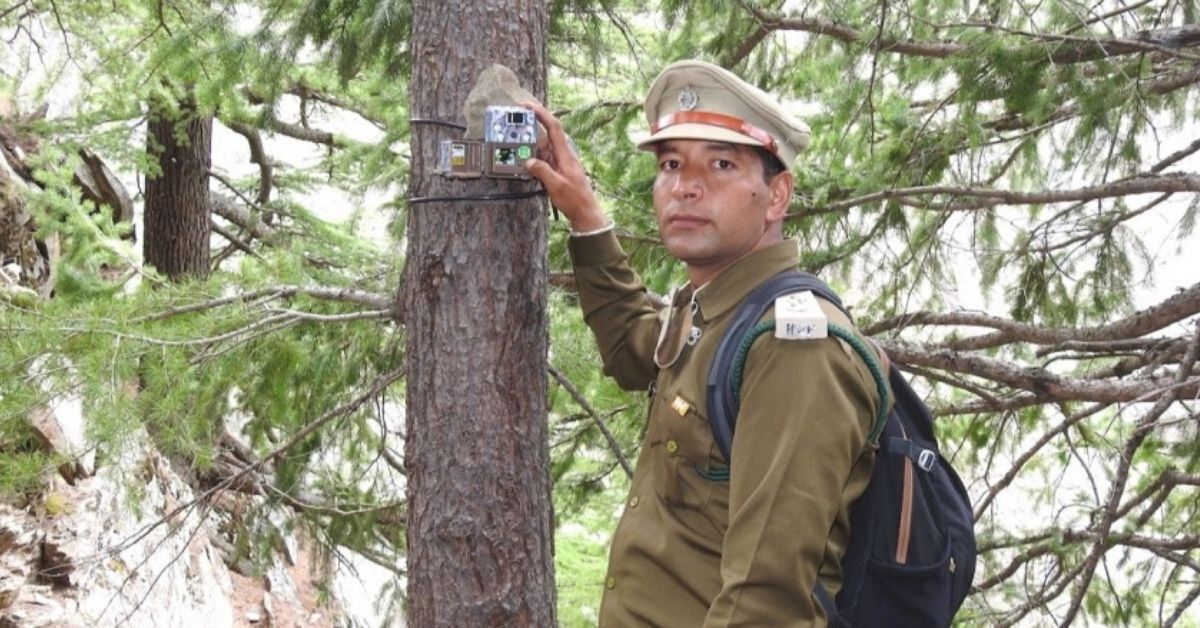
Shiv Kumar
Speaking to the , Shiv said, “Often, people from this [Gaddi] community did not apply for compensation even when they lost livestock because the alpine meadows they used to graze their livestock in would be 30 to 35 kilometres from the nearest town. So we got together with the Nature Conservation Foundation (NCF) and made a manual with all the procedures to follow if one were to lose any livestock.”
(Edited by Pranita Bhat; Images courtesy , Whitley Fund for Nature)
Given these figures, it’s imperative for local communities to be engaged in the conservation of this threatened species. Here are eight conservationists who have done incredible work in not only understanding snow leopards but also engaging local communities to protect them.
Charudutt Mishra
Charudutt Mishra (Charu), the executive director of Snow Leopard Trust, is considered by many as the world’s foremost expert on snow leopard conservation.
He is a pioneer of the community-based conservation model and has spent nearly three decades spearheading groundbreaking projects. In 1997, he embarked upon a PhD in the remote village of Kibber, in Spiti Valley, Himachal Pradesh. Upon reaching there, he heard a disturbing story that a snow leopard had recently been mercilessly killed.
Instead of letting anger or distrust get in the way, Charu immersed himself in the community and took the time to understand the hardships under which they lived. He learnt that local communities were not unwilling but unable to “actually participate in conservation”.

Snow Leopard (Images courtesy Karamjeet Singh/X)
Akin to the model later adopted by the late and Dr Tsewang Namgail of Snow Leopard Conservancy-India Trust in Ladakh, Charu created India’s first community-managed livestock insurance programme in 2002 — followed by other community-based conservation and livelihood initiatives.
In 2013, he established the Global Snow Leopard and Ecosystem Protection Programme, “an intergovernmental alliance of all 12 snow leopard range countries working towards their protection”. Today, he continues to impart valuable knowledge to other conservationists on how to ethically and effectively engage with local communities to protect snow leopards.
(Source: )
Rinchen Wangchuk, Dr Tsewang Namgail, and Jigmet Dadul
The late Rinchen Wangchuk — a wildlife researcher from Ladakh and founder of the (SLC-IT) — and his successor (current director of SLC-IT) Dr Tsewang Namgail, understood very early on the need to reconcile snow leopard conservation with the needs of the local communities who lose their livestock, particularly sheep and goats, to these elusive wild cats.
For example, growing up as a child herder in the picturesque Skurbuchan village in Leh district, Dr Namgail understood what it meant for local communities to lose their goats and sheep to snow leopards. This is something even the late Rinchen Wangchuk and Jigmet Dadul — one of India’s leading Snow Leopard naturalists and trackers — also understood as they spent entire winters living in tents and monitoring snow leopards in the 1990s.

Late Rinchen Wangchuk
They took a variety of steps to address the needs of local communities, thus addressing a primary source of snow leopard deaths — human-animal conflicts. These steps included assisting local farmers and nomads to build structures that protect their livestock; establishing a community-controlled livestock insurance programme; and pioneering one of the earliest models of eco-tourism with conservation-linked homestays located in critical snow leopard habitats.
Converting these once-angry locals into active conservationists is no mean feat. Today, however, Jigmet and his son Nawang Gaylston, run a wildlife expedition company called ‘The Snow Leopard Quest’, bringing researchers, conservationists, and tourists to witness this majestic wild cat.
Khenrab Phuntsog
— an award-winning snow leopard conservationist with over two decades of experience as a Wildlife Guard in Hemis National Park, Ladakh — grew up in a small village called Chilling. He was barely 12 years old when he saw a snow leopard in the wild barely 100 metres away hunting a blue sheep.

Khenrab Phuntsog
As many conservationists have stated in the past, there is something almost mythical and spiritual about the presence of snow leopards. It’s something Khenrab also felt when he was 12 and there is no doubt that this vivid memory he had of a snow leopard would inspire Khenrab to dedicate the rest of his life to protect them.
Since joining the Wildlife Protection Department in 2000, he has rescued about 50 snow leopards trapped in human habitations and released them back into the wild. An expert in installing camera traps and tracking, he also consults private operators on how to plan snow leopard expeditions, train spotters and trackers, and leave behind a minimal ecological footprint.
Karma Sonam
— a field manager with the Nature Conservation Foundation (NCF) in Ladakh — has dedicated his life to reducing human-wildlife conflict in 17 communities across Eastern Ladakh and creating awareness about the importance of environmental protection.
Leveraging a system of community-based conservation, he has facilitated the implementation of critical initiatives like self-sustaining insurance schemes for pastoralists who lose their livestock to predators like snow leopards, creation of grazing-free reserves for herbivores like the Tibetan gazelle (that are prey for snow leopards), and converting Shandongs (traditional wolf traps) into holy Buddhist sites that allow trapped animals to escape back into the wild.

Karma Sonam
What has worked for Karma is his natural ability to build and maintain close relationships with different communities. Leveraging these close relationships, he convinces and incentivises local communities to work for wildlife conservation. For decades, pastoralists in Ladakh have had a difficult relationship with predators, like snow leopards and wolves, who prey on their livestock. Through his extensive grassroots efforts, he has done a lot to repair that relationship.
Koustubh Sharma
Koustubh Sharma — the Conservation Science Director at Snow Leopard Trust — has worked in some of the remotest and roughest terrains in the world to better understand snow leopard ecology.
Introduced to them by Dr Raghu Chundawat, a pioneer of snow leopard studies in India, Koustubh has dedicated a great deal of time to the Global Snow Leopard and Ecosystem Protection Programme. The programme, according to Koustubh, “brings together governments from 12 snow leopard range countries, policymakers, institutions, organisations and conservationists toward securing the future of snow leopards and their mountains”.

“What I wish more people knew about conservation initiatives is that not a single penny of the money meant for snow leopard conservation goes into the pocket of the snow leopards. It is always invested in support of people, whether it is the local or indigenous communities running conservation programmes, the frontline rangers patrolling and monitoring wildlife, or the conservation teams working under expedition conditions,” says Koustubh.
He goes on to add, “…our initiatives are about much more than just protecting a single species. We work closely with local and indigenous communities to create sustainable livelihoods that benefit both people and wildlife. When we invest in conservation, we’re investing in people.”
(Source: and )
Shiv Kumar
It was an evening in 2019 when Shiv Kumar — a Deputy Range Officer at Lahaul forest in Himachal Pradesh — first spotted a snow leopard. Speaking to in 2022, he called it an “unforgettable moment”. Thereafter, Shiv began conservation awareness classes about snow leopards among school children for the animal’s protection. He also reached out to villagers to inform them about its importance, threatened existence and its need for protection.
Like in Ladakh, the livestock belonging to the Gaddi community — a community of migratory shepherds — and locals in the Lahaul area remain under threat from snow leopards.

Shiv Kumar
Speaking to the , Shiv said, “Often, people from this [Gaddi] community did not apply for compensation even when they lost livestock because the alpine meadows they used to graze their livestock in would be 30 to 35 kilometres from the nearest town. So we got together with the Nature Conservation Foundation (NCF) and made a manual with all the procedures to follow if one were to lose any livestock.”
(Edited by Pranita Bhat; Images courtesy , Whitley Fund for Nature)
